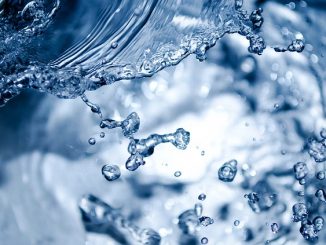
Although a larger portion of our planet is covered in water, we continue to satisfy less than half a percent of human water needs. What’s more troubling is that more than 95% of the water on planet Earth is undrinkable because of its high saline content. However, thanks to a team of researchers at the University of Manchester, the solution to this problem might now be at hand.
According to the team, they have developed a graphene-oxide membrane that can turn salt water into potable water. The study — which was recently published in the journal Nature Nanotechnology under the title “Tunable sieving of ions using graphene oxide membranes” — describes how salt can be sieved from salt water by controlling the size of the graphene membrane.
Initially created at the University of Manchester lab in 2004 by using Scotch Tape to peel layers off a graphite block, graphene is made up of pure carbon atoms arranged in a hexagonal structure. It is referred to as a ‘wonder material’ because of its almost magical properties.
To begin with, graphene is super strong — more than 100 times stronger than steel. It’s an excellent conductor of both heat and electricity; it’s even more conductive than copper. It’s super-flexible– like rubber. It’s transparent yet it has notable light absorption properties. Just recently, it’s been discovered that graphene has self-healing properties. And it’s impenetrable too.
It’s this impenetrability that makes graphene a perfect material to use for filtering water.
Previously, graphene’s capability to filter organic molecules, nanoparticles and large salts has already been demonstrated. The challenge, however, was in filtering smaller salts found in sea water. As it is, graphene membranes become larger when submerged in water. This swelling negatively impacts the spacing between graphene-oxide layers because the enlarged pores allow small salt molecules to slip through.
According to the University of Manchester research team led by Professor Rahul Nair, they have figured out a way to control the spacing of layers within graphene membranes immersed in water by physically confining the membrane so it can’t expand. This supposedly enabled them to accurately control the size of the pores, which in turn allowed them to keep out unwanted particles (including small salts) simply by making sieves that were smaller than the diameter of the hydrated salt ions.
Even if permeation rate decreases as the size of the sieve decreases, water still flows relatively quickly. This means that even the smallest sized salts can be filtered by their sieve, and no matter how small the sieve gets, the rate of water flow is hardly affected. And that’s exactly what’s needed for an effective desalination process.
The fact that this newly developed method can easily be scaled up or down makes it a double win. If it’s scaled up, it can help improve the efficiency of desalination plants. If it’s scaled down, it can be used to make affordable water purifiers, which will be a big help for countries where clean water supply is limited.
As Prof. Nair said in a news report from The University of Manchester: “Realisation of scalable membranes with uniform pore size down to atomic scale is a significant step forward and will open new possibilities for improving the efficiency of desalination technology.”
- Bulenox: Get 45% to 91% OFF ... Use Discount Code: UNO
- Risk Our Money Not Yours | Get 50% to 90% OFF ... Use Discount Code: MMBVBKSM
Disclaimer: This page contains affiliate links. If you choose to make a purchase after clicking a link, we may receive a commission at no additional cost to you. Thank you for your support!




Leave a Reply